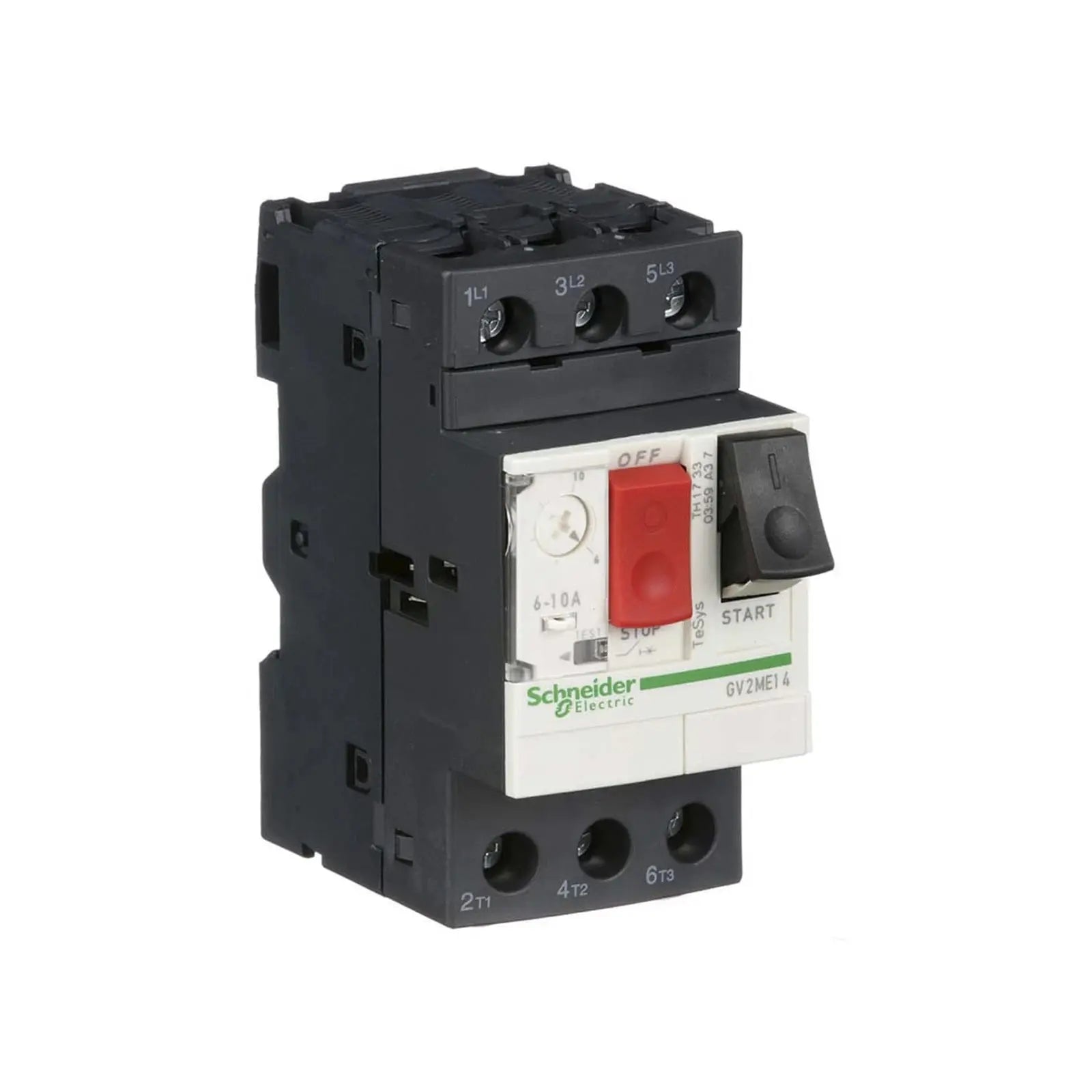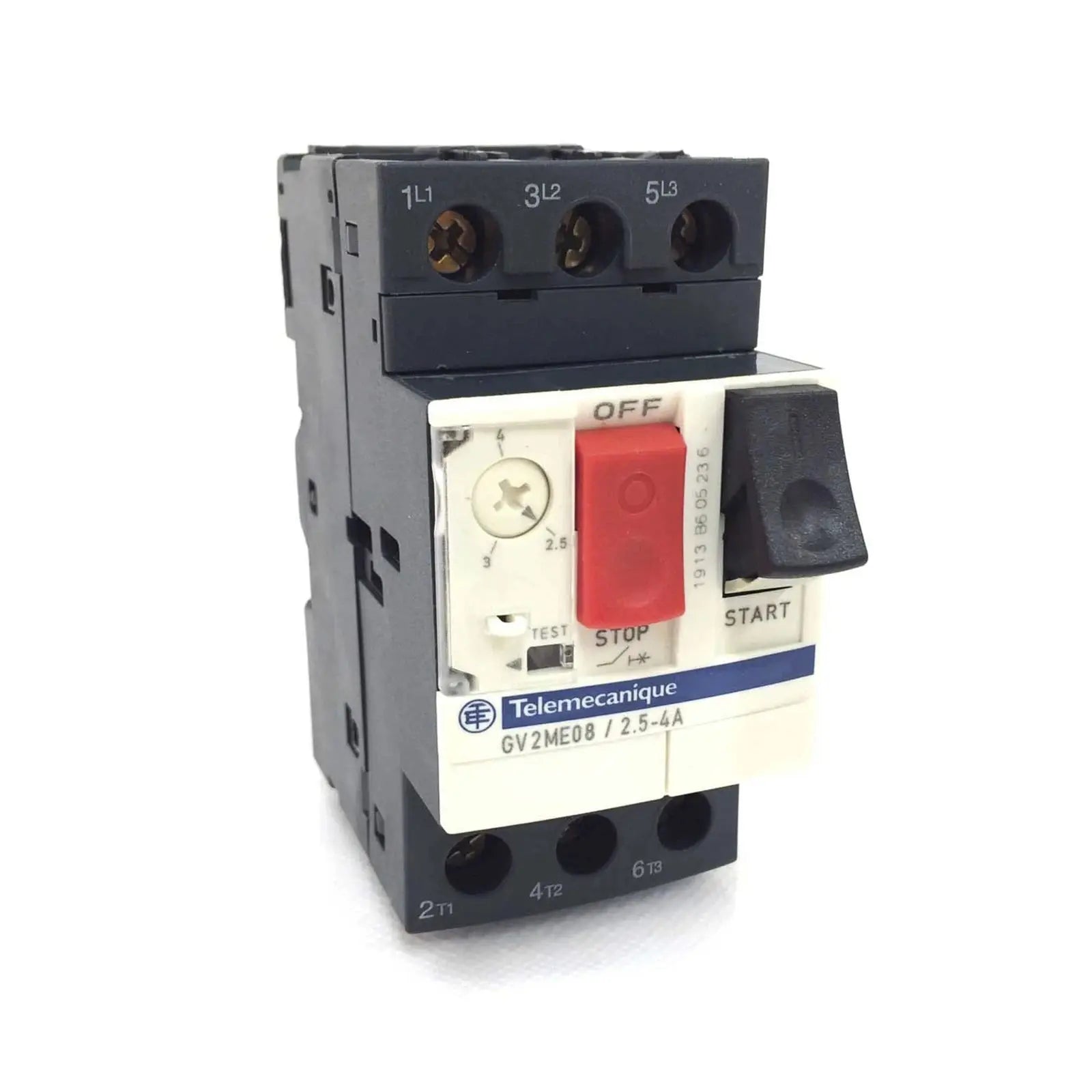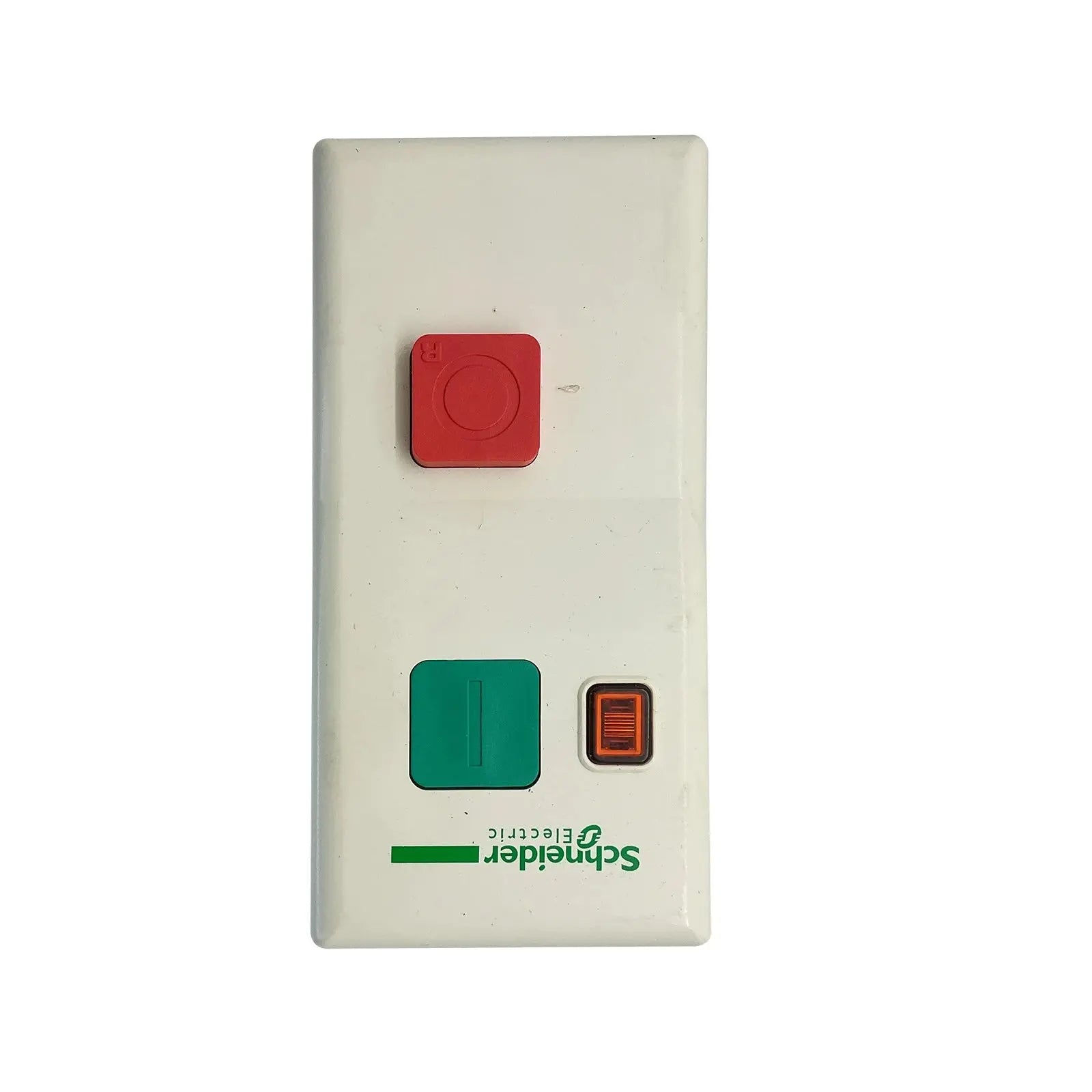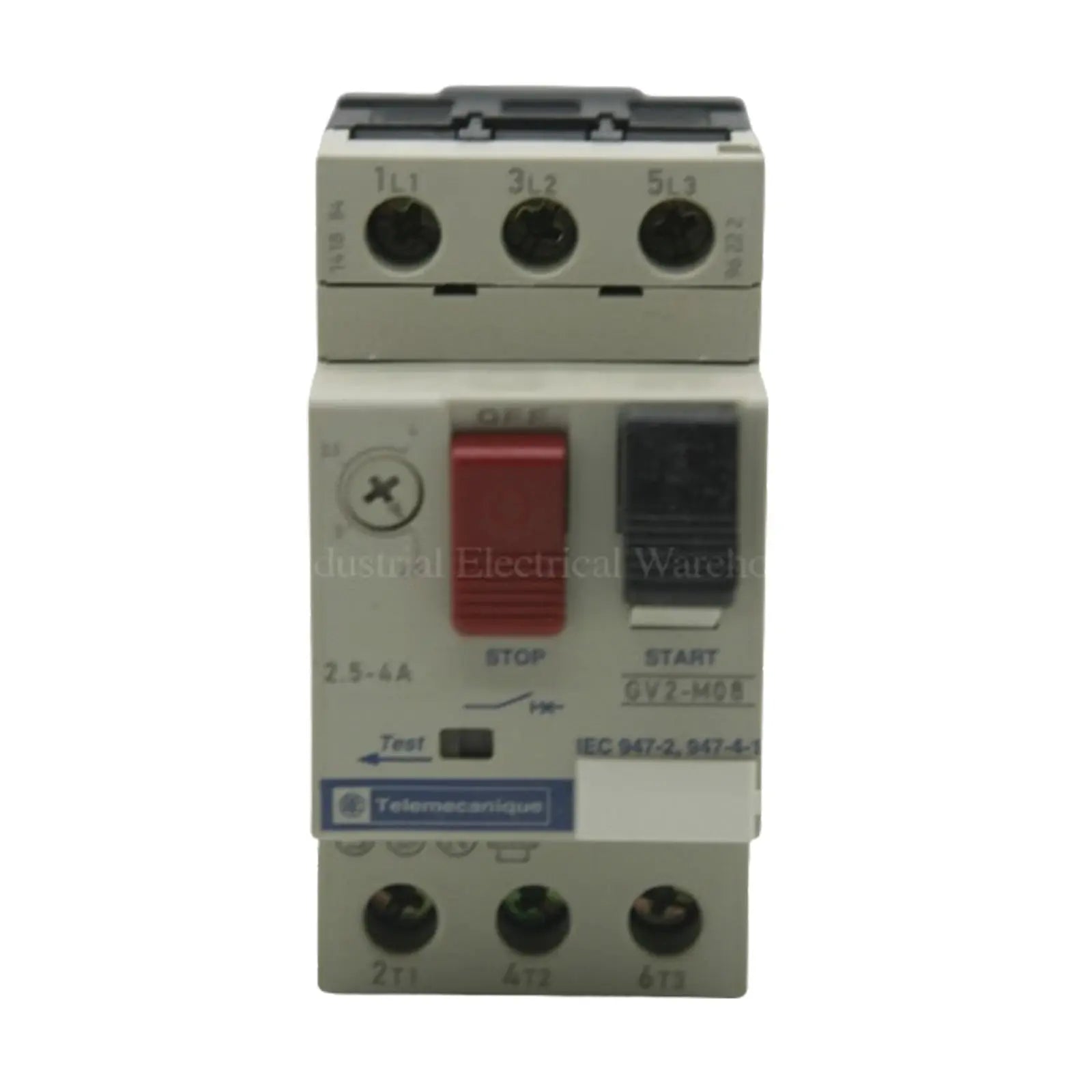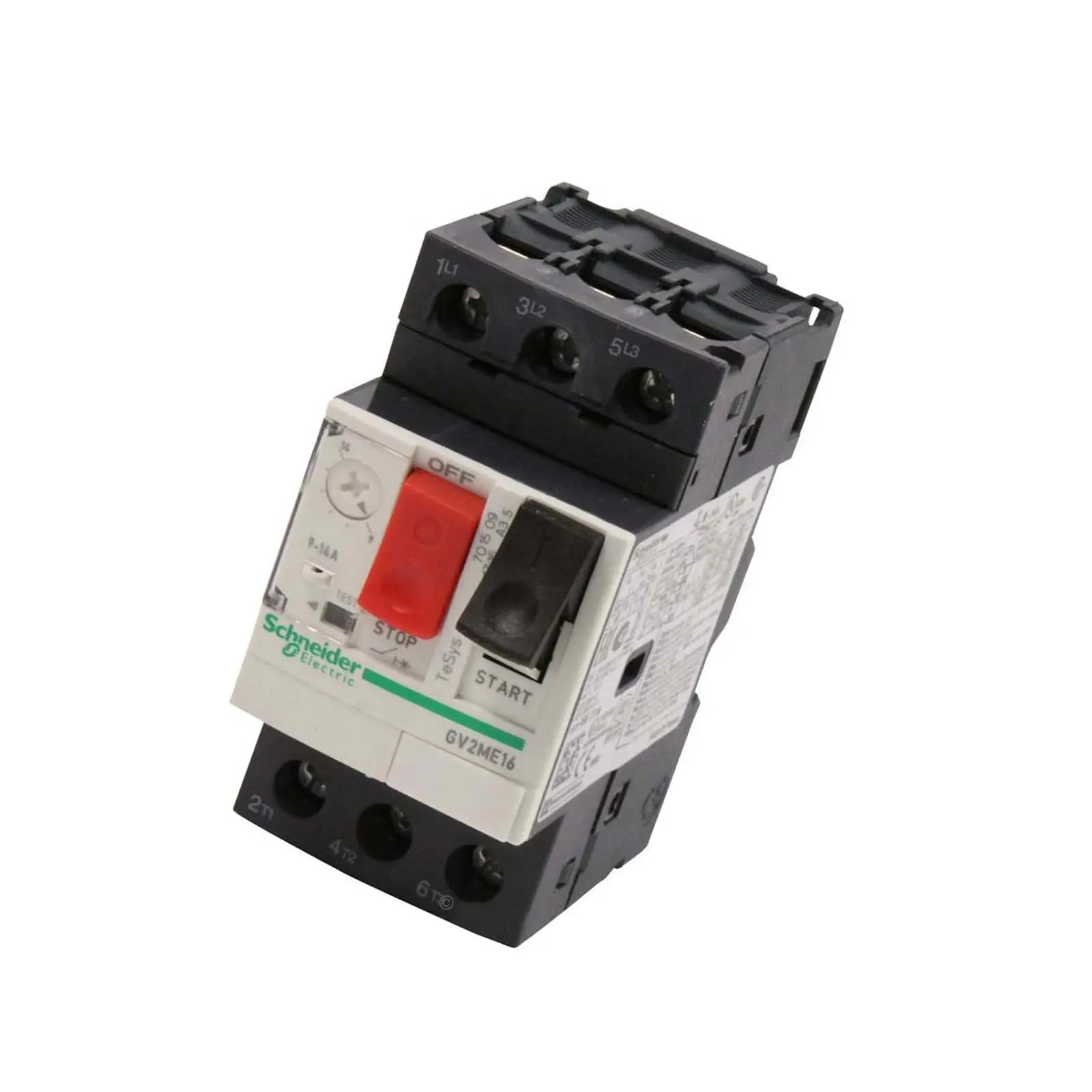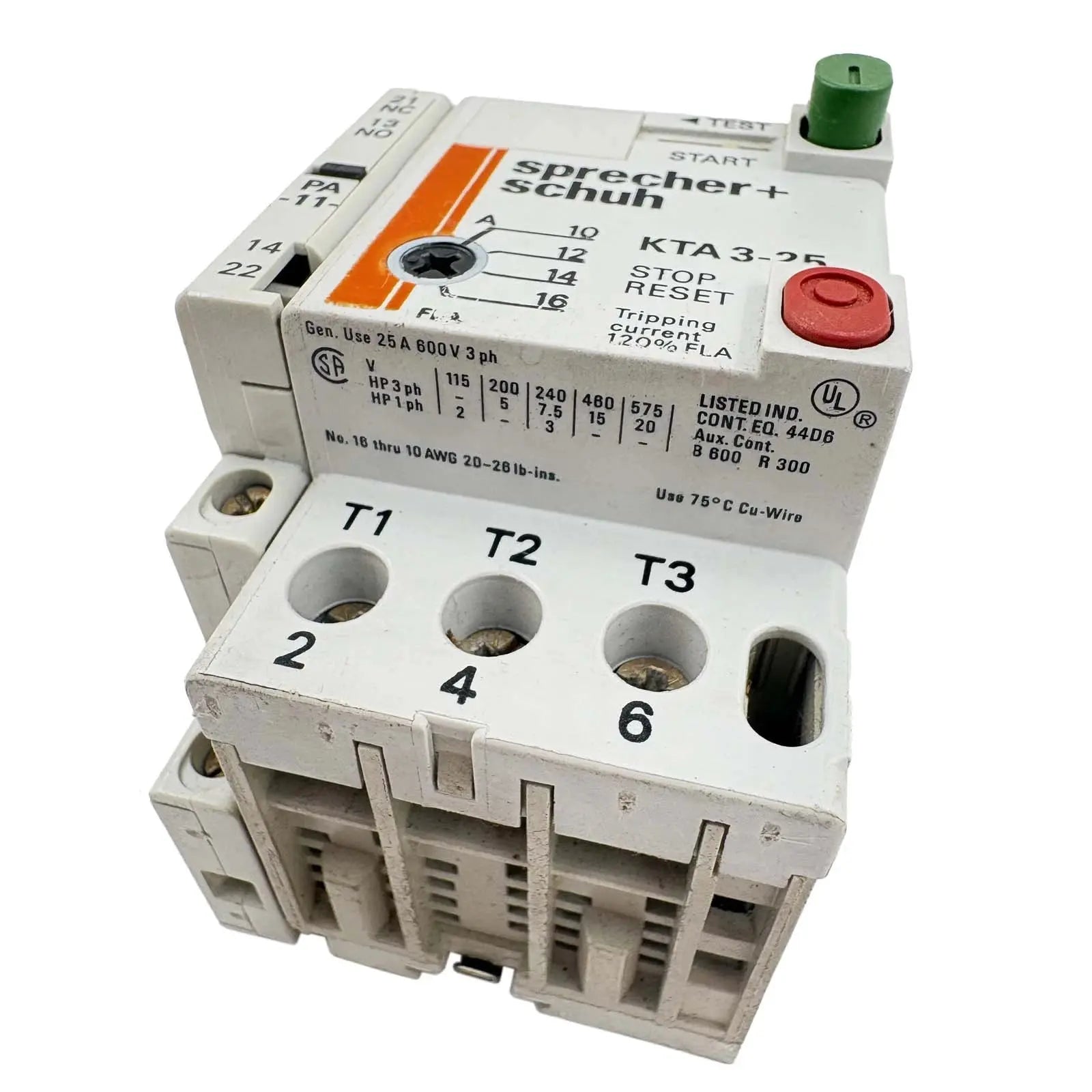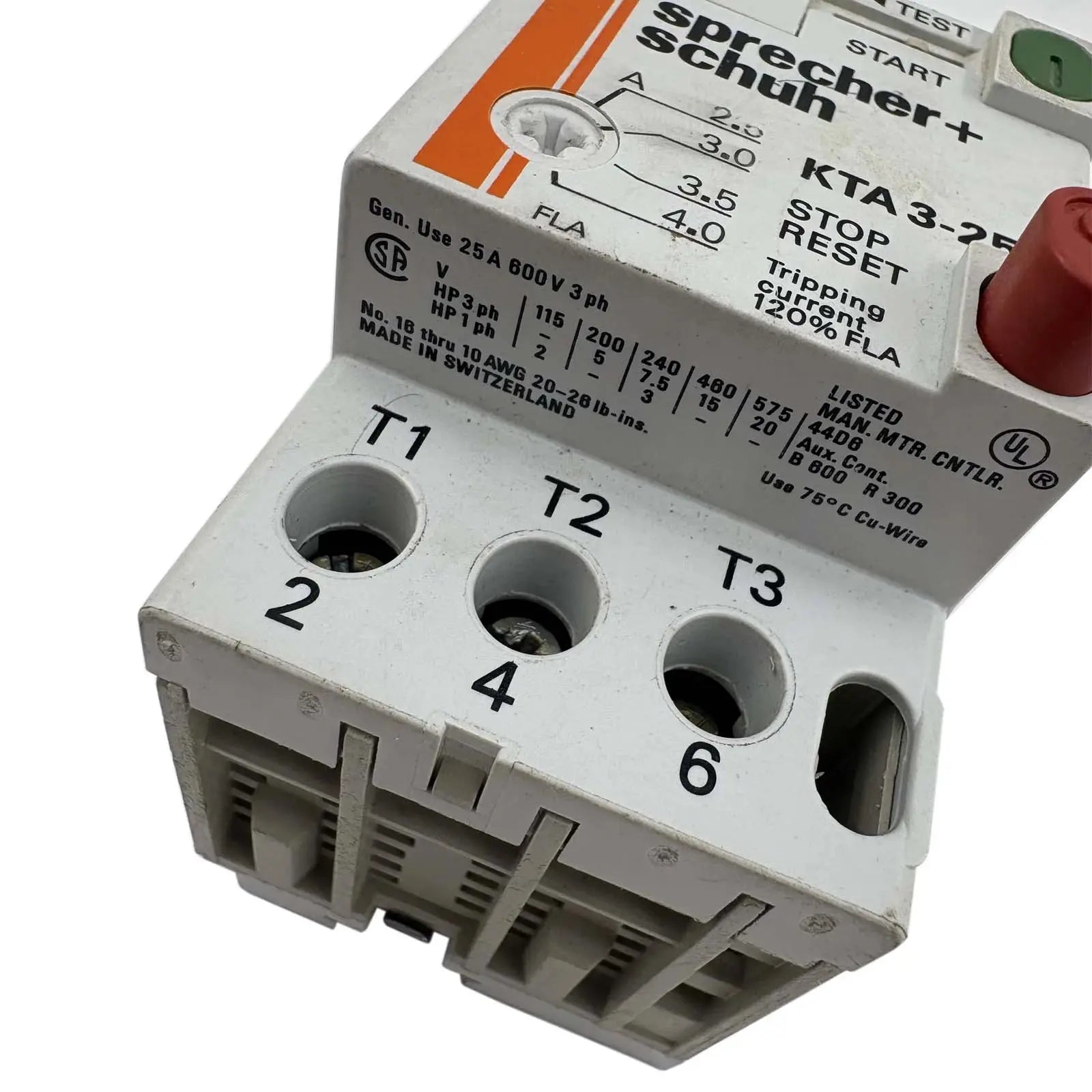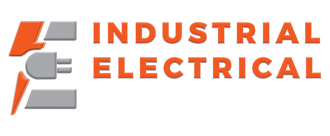Arrancador de motor: iniciación y control de motores eléctricos
Comprensión de los conceptos básicos de los arrancadores de motores
Para comprender la importancia de los arrancadores de motor, es fundamental comprender sus fundamentos. Un arrancador de motor es un dispositivo que inicia y controla el funcionamiento de un motor eléctrico. Desempeña un papel crucial para garantizar el arranque suave y el funcionamiento seguro de los motores. Profundicemos en la definición y función de los arrancadores de motor, los diferentes tipos disponibles y los componentes que los componen.
Definición y función de los arrancadores de motor
Los arrancadores de motor son dispositivos eléctricos que proporcionan la corriente necesaria para arrancar y hacer funcionar motores desde parados. Están diseñados para proteger los motores de posibles daños causados por corriente excesiva, desequilibrio de tensión o sobrecalentamiento. Su función principal es controlar la alimentación del motor, garantizando un funcionamiento seguro y eficaz.
Los arrancadores de motor constan de una combinación de contactores, dispositivos de protección contra sobrecargas, interruptores de control, fusibles y relés de control del motor. El contactor es el elemento central del arrancador, responsable de conectar y desconectar el motor de la fuente de alimentación. Los dispositivos de protección contra sobrecargas, como los relés térmicos de sobrecarga, monitorizan la corriente del motor y lo protegen del sobrecalentamiento disparando el circuito si la corriente supera un límite determinado.
Tipos de arrancadores de motor
Existen varios tipos de arrancadores de motor disponibles, cada uno adaptado a requisitos y aplicaciones específicas. Los más comunes incluyen arrancadores directos en línea (DOL), arrancadores estrella-triángulo, arrancadores de autotransformador y arrancadores suaves. La elección del arrancador de motor depende de factores como el tamaño del motor, la corriente de arranque y las características de rendimiento deseadas.
El arrancador directo en línea (DOL) es el tipo de arrancador de motor más sencillo y común. Conecta el motor directamente a la fuente de alimentación, lo que permite un arranque a plena tensión. Los arrancadores estrella-triángulo, por otro lado, utilizan una serie de contactores para arrancar el motor inicialmente en una configuración en estrella de bajo voltaje y luego conmutar a una configuración en triángulo de alto voltaje una vez que el motor alcanza cierta velocidad. Los arrancadores autotransformadores proporcionan un arranque suave y controlado mediante un transformador de voltaje variable que aumenta gradualmente el voltaje suministrado al motor. Los arrancadores suaves, también conocidos como arrancadores de estado sólido, utilizan componentes electrónicos para aumentar gradualmente el voltaje y la corriente suministrados al motor, reduciendo la tensión sobre este durante el arranque.
Componentes de un arrancador de motor
Un arrancador de motor consta de varios componentes esenciales que interactúan para facilitar el arranque y el control del motor. Estos componentes incluyen contactores, dispositivos de protección contra sobrecargas, interruptores de control, fusibles y relés de control del motor. Cada uno de estos componentes desempeña una función única en el funcionamiento seguro y eficiente de los arrancadores y motores.
Los contactores son dispositivos electromecánicos que actúan como interruptores, permitiendo o interrumpiendo el flujo de corriente al motor. Los dispositivos de protección contra sobrecargas, como los relés térmicos de sobrecarga, monitorizan la corriente del motor y lo protegen del sobrecalentamiento disparando el circuito si la corriente supera un límite determinado. Los interruptores de control, como los botones de arranque y parada, permiten controlar manualmente el funcionamiento del motor. Los fusibles son dispositivos de seguridad que protegen el motor y el arrancador de cortocircuitos y sobrecorrientes fundiéndose e interrumpiendo el circuito cuando la corriente supera un nivel determinado. Los relés de control del motor se utilizan para controlar el funcionamiento del arrancador, proporcionando funciones adicionales como la inversión de la dirección del motor o el control de varios motores simultáneamente.
Comprender los fundamentos de los arrancadores de motor es crucial para cualquier persona involucrada en el diseño, la instalación o el mantenimiento de sistemas eléctricos. Al seleccionar el tipo correcto de arrancador de motor y asegurar el correcto funcionamiento de sus componentes, puede garantizar el funcionamiento seguro y eficiente de los motores, prolongando su vida útil y minimizando el riesgo de costosos tiempos de inactividad.
El papel de los arrancadores de motor en los motores eléctricos
Los arrancadores de motor desempeñan un papel vital en el funcionamiento de los motores eléctricos. Son responsables de iniciar la rotación del motor y controlar su velocidad y dirección de rotación. Exploremos cómo los arrancadores de motor facilitan el arranque y el control de los motores eléctricos, así como las características de seguridad que ofrecen.
Iniciación de motores eléctricos
Cuando se suministra energía a un motor, se requiere una sobretensión para superar la inercia y comenzar a girar. Los arrancadores de motor proporcionan esta sobretensión inicial aplicando momentáneamente un alto voltaje a los devanados del motor. Esto arranca el motor y lo pone en movimiento, permitiéndole funcionar sin problemas.
Control de motores eléctricos
Además de arrancar motores, los arrancadores también controlan su funcionamiento. Permiten arrancarlos, detenerlos y controlar la velocidad y la dirección de rotación. Este control es esencial en diversas aplicaciones, como maquinaria industrial, sistemas de climatización (HVAC) y sistemas de transporte.
Características de seguridad de los arrancadores de motor
Los arrancadores de motor están equipados con múltiples funciones de seguridad para garantizar la protección tanto del motor como del usuario. Estas funciones incluyen protección contra sobrecarga, cortocircuito, subcarga, temperatura y tensión. Mediante la monitorización continua de las condiciones de funcionamiento del motor, el arrancador puede detectar cualquier anomalía y tomar las medidas necesarias para evitar daños o lesiones.
Una característica de seguridad importante de los arrancadores de motor es la protección contra sobrecargas. Esta función ayuda a prevenir daños al motor al monitorear la corriente que fluye a través de él. Si la corriente supera un umbral determinado, el arrancador desconectará automáticamente el motor de la fuente de alimentación, evitando así el sobrecalentamiento y posibles daños.
Otra característica de seguridad es la protección contra cortocircuitos. En caso de cortocircuito, donde se crea una ruta de baja resistencia entre la fuente de alimentación y el motor, el arrancador detecta el flujo de corriente excesivo e interrumpe rápidamente el circuito. Esto protege el motor de daños y reduce el riesgo de incendio o descargas eléctricas.
Cómo seleccionar el arrancador de motor adecuado
Elegir el arrancador de motor adecuado es crucial para un rendimiento óptimo y una larga vida útil. Al seleccionar un arrancador de motor, se deben considerar varios factores, como el tipo de motor, el tamaño, el entorno operativo y las características de control deseadas. Analicemos estos factores en detalle para comprender cómo tomar una decisión informada.
En cuanto a arrancadores de motor, no hay una solución universal. Cada motor tiene requisitos únicos que deben tenerse en cuenta para garantizar un funcionamiento fluido y eficiente. Profundicemos en los factores a considerar al seleccionar un arrancador de motor.
Factores a considerar
Al seleccionar un arrancador de motor, es importante considerar factores como los requisitos de corriente y voltaje del motor, la temperatura ambiente del entorno operativo, el ciclo de trabajo y cualquier característica adicional requerida para aplicaciones específicas. No considerar estos factores puede resultar en un funcionamiento ineficiente del motor, desgaste prematuro o incluso fallas del mismo.
Analicemos más de cerca cada uno de estos factores:
Requisitos de corriente y voltaje: El arrancador de motor debe ser capaz de manejar los requisitos de corriente y voltaje del motor. Es crucial seleccionar un arrancador que proporcione la corriente y el voltaje necesarios para garantizar el correcto funcionamiento del motor.
Temperatura ambiente: El entorno operativo influye significativamente en el rendimiento del motor. Las altas temperaturas pueden afectar la eficiencia y la vida útil del motor. Es importante seleccionar un arrancador de motor que soporte la temperatura ambiente del entorno donde operará el motor.
Ciclo de trabajo: El ciclo de trabajo se refiere al tiempo que el motor estará en funcionamiento en comparación con el tiempo total. Los motores con ciclos de trabajo altos requieren arrancadores que puedan soportar un funcionamiento continuo sin sobrecalentarse ni desgastarse prematuramente.
Características adicionales: Dependiendo de la aplicación específica, podrían requerirse características adicionales. Por ejemplo, algunos motores pueden requerir protección contra sobrecargas, mientras que otros pueden necesitar funciones de control para un control preciso de la velocidad. Es fundamental identificar estos requisitos adicionales y seleccionar un arrancador de motor que los satisfaga.
Adaptación de arrancadores de motor a los tipos de motor
Cada motor tiene características y requisitos de arranque diferentes. Por lo tanto, es crucial elegir el arrancador adecuado para cada tipo de motor. Por ejemplo, los motores de inducción pueden beneficiarse de arrancadores suaves para reducir la sobrecorriente inicial, mientras que los motores síncronos pueden requerir funciones de control específicas para sincronizarse con la red eléctrica.
Al seleccionar un arrancador de motor diseñado específicamente para el tipo de motor, puede garantizar un rendimiento óptimo y evitar posibles problemas que puedan surgir por componentes no compatibles.
Comprensión de las clasificaciones de los arrancadores de motores
Los arrancadores de motor vienen con diversas clasificaciones y especificaciones que indican sus capacidades y limitaciones. Es fundamental comprender claramente estas clasificaciones, incluyendo la corriente nominal máxima, la tensión nominal y la capacidad de resistencia a cortocircuitos. Este conocimiento garantiza el funcionamiento seguro y eficiente del arrancador y del motor conectado.
Al seleccionar un arrancador de motor, es importante consultar las especificaciones y directrices del fabricante para garantizar que el arrancador elegido sea compatible con el motor y cumpla con todos los requisitos necesarios. Dedicar tiempo a comprender a fondo estos factores y tomar una decisión informada resultará en un rendimiento óptimo y una mayor durabilidad del motor.
Instalación y mantenimiento de arrancadores de motores
Una instalación adecuada y un mantenimiento regular son cruciales para el funcionamiento confiable y eficiente de los arrancadores de motor. Exploremos el proceso de instalación paso a paso y las prácticas de mantenimiento rutinario que deben seguirse para garantizar la longevidad de los arrancadores de motor.
Guía de instalación paso a paso
La instalación de un arrancador de motor requiere una atención minuciosa a los detalles para garantizar su correcto funcionamiento. El proceso de instalación incluye el montaje del arrancador, la conexión del cableado eléctrico, la configuración de los controles y la realización de pruebas para verificar su funcionamiento. Seguir una guía paso a paso ayudará a evitar errores de instalación y a garantizar una configuración exitosa.
Primero, seleccione una ubicación adecuada para el arrancador. Debe instalarse en un área bien ventilada, lejos del calor excesivo, la humedad y sustancias corrosivas. Monte el arrancador de forma segura utilizando los soportes o los orificios de montaje proporcionados, asegurándose de que esté nivelado y estable.
A continuación, conecte cuidadosamente el cableado eléctrico según las instrucciones del fabricante. Esto incluye la conexión de los cables de la fuente de alimentación, el motor y el circuito de control. Es fundamental utilizar cables de la sección correcta y asegurar un aislamiento y una terminación adecuados para evitar riesgos eléctricos y garantizar un funcionamiento fiable.
Una vez finalizado el cableado, configure los ajustes de control del arrancador de motor. Esto puede implicar ajustar parámetros como la protección del motor, los métodos de arranque y parada, y las entradas de control. Consulte la documentación del arrancador para obtener instrucciones específicas sobre cómo configurar estos ajustes correctamente.
Una vez finalizada la instalación, es fundamental realizar pruebas para verificar el funcionamiento del arrancador. Esto incluye verificar la rotación correcta del motor, verificar que responda correctamente a las entradas de control y probar su rendimiento en diferentes condiciones de carga. Cualquier anomalía o problema debe solucionarse de inmediato antes de poner en funcionamiento el arrancador.
Prácticas de mantenimiento de rutina
Los arrancadores de motor, como cualquier otro dispositivo eléctrico, requieren mantenimiento regular para mantener su rendimiento y prolongar su vida útil. Las prácticas de mantenimiento rutinario para arrancadores de motor incluyen la inspección y limpieza de los componentes, la revisión de las conexiones eléctricas, la lubricación de las piezas móviles y la realización de pruebas periódicas para garantizar su correcto funcionamiento. Estas prácticas ayudan a identificar y abordar cualquier problema antes de que se agrave y provoque problemas graves.
Comience por inspeccionar visualmente el arrancador del motor para detectar cualquier signo de daño, como conexiones sueltas o corroídas, componentes desgastados o sobrecalentamiento. Limpie el arrancador con un cepillo suave o aire comprimido para eliminar el polvo, la suciedad o los residuos que puedan afectar su rendimiento.
A continuación, revise las conexiones eléctricas para asegurarse de que estén firmes y seguras. Las conexiones sueltas pueden provocar caídas de tensión, sobrecalentamiento y posibles riesgos eléctricos. Apriete las conexiones sueltas e inspeccione el cableado para detectar cualquier signo de desgaste o daño que pueda requerir reparación o reemplazo.
Lubrique las piezas móviles del arrancador de motor, como contactores y relés, con un lubricante adecuado recomendado por el fabricante. Esto ayuda a reducir la fricción, evitar el desgaste excesivo y garantizar un funcionamiento suave. Asegúrese de seguir las instrucciones del fabricante sobre el tipo y la frecuencia de lubricación.
Realice pruebas periódicas para garantizar el correcto funcionamiento del arrancador del motor. Esto puede incluir la comprobación del tiempo de respuesta del arrancador, la verificación de la precisión de los ajustes de protección del motor y la realización de pruebas de resistencia de aislamiento. Estas pruebas ayudan a identificar posibles problemas y permiten tomar medidas correctivas oportunas.
Solución de problemas comunes
A pesar de una instalación y un mantenimiento adecuados, los arrancadores de motor pueden presentar problemas ocasionalmente. Los problemas más comunes incluyen contactores averiados, fusibles fundidos, sobrecarga del motor o cableado incorrecto. Comprender cómo solucionar estos problemas e identificar sus causas raíz puede ayudar a resolverlos eficazmente y minimizar el tiempo de inactividad.
Si un motor no arranca, es fundamental revisar la fuente de alimentación y asegurarse de que el arrancador reciba el voltaje correcto. Inspeccione los contactores para detectar cualquier signo de daño o desgaste y reemplácelos si es necesario. Los fusibles fundidos pueden indicar un cortocircuito o una sobrecarga, por lo que es crucial identificar y abordar la causa subyacente antes de reemplazar el fusible.
En caso de sobrecarga del motor, verifique las condiciones de carga y asegúrese de que se encuentren dentro de los límites especificados. Ajuste la configuración de protección del motor si es necesario para evitar sobrecargas recurrentes. Un cableado incorrecto puede provocar un comportamiento errático del motor o fallos de arranque. Inspeccione cuidadosamente las conexiones del cableado y corrija cualquier error o conexión suelta.
A la hora de solucionar problemas de arrancadores de motor, es recomendable consultar la documentación del fabricante o buscar ayuda de un técnico calificado para garantizar un diagnóstico preciso y la resolución del problema.
En conclusión, los arrancadores de motor son dispositivos esenciales para el arranque y control de motores eléctricos. Garantizan un funcionamiento seguro y eficiente del motor, a la vez que lo protegen de posibles daños. Comprender los fundamentos de los arrancadores de motor, seleccionar el adecuado y seguir las prácticas correctas de instalación y mantenimiento son pasos cruciales para maximizar el rendimiento y la longevidad del motor. Al implementar estas prácticas, tanto los arrancadores como los motores eléctricos pueden funcionar de forma fluida y fiable durante años.
¿Necesita pedidos al por mayor o recomendaciones de expertos sobre MCE-B-MS?
¿Busca pedidos al por mayor de MCE-B-MS o necesita ayuda para elegir la solución industrial adecuada? Nuestro equipo está aquí para ayudarle con presupuestos personalizados, recomendaciones de productos y asesoramiento técnico. Ya sea electricista, contratista o empresario, ofrecemos soluciones a medida para satisfacer sus necesidades.
📩 ¡ Contáctanos o chatea con nosotros en vivo para obtener asistencia instantánea!
¡Explora nuestra colección de ofertas de locura mensual!
¡No te pierdas los grandes ahorros en nuestra tienda! Descubre las mejores ofertas en:
¡Explora estas categorías ahora y aprovecha las mejores ofertas antes de que se acaben!










